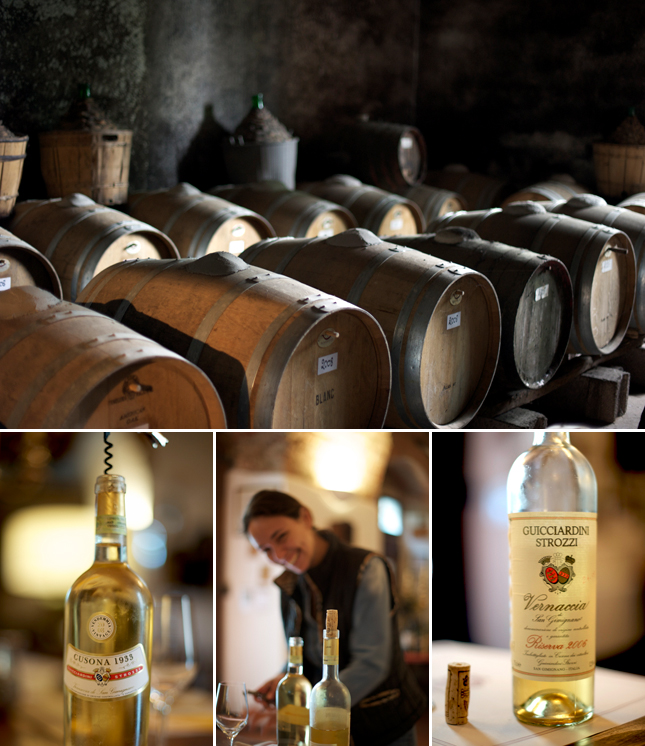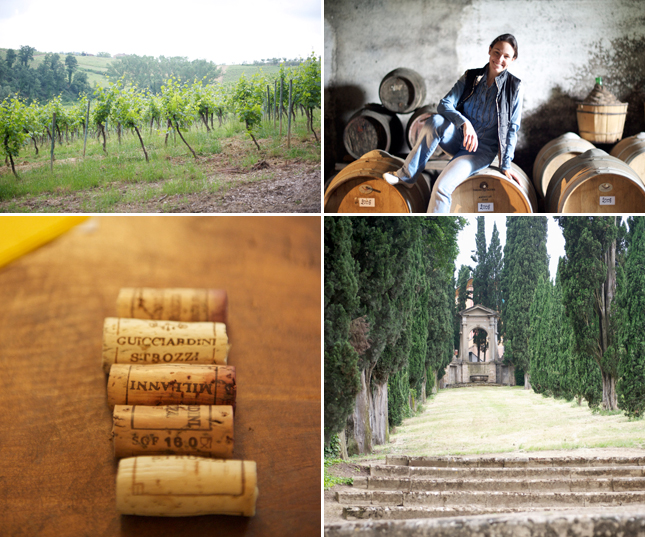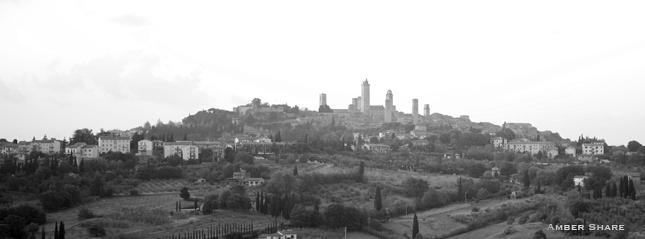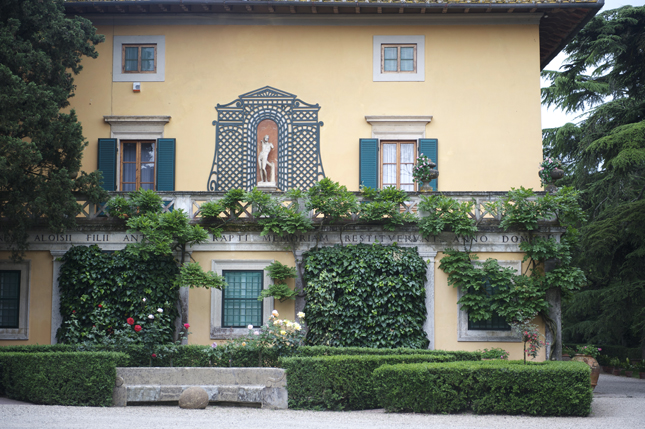Vernaccia di San Gimignano - A Renaissance in Tuscany

It is rare that a business of any kind makes it to the millennium mark but there are a handful in Tuscany. Astoundingly, some have been in operation under the guidance of a single family for ten centuries. One of these gems is the winery owned and operated by Prince Girolamo Guicciardini with the assistance of his daughter Princess Natalia Guicciardini Strozzi.
The first mention of the winery is found in Medieval documents written in 994 though the vineyards were in place and wine was being made long before that. As is to be expected, in the 1,016 years since the first mention of the winery in Cusona, Italy, near San Gimignano, the family has experienced its share of up and downs. Ups included a beneficial alliance with the Medicis who sent the regional white wine they and others produced to the pope. Downs, in later years the Strozzis broke from the Medicis and paid a heavy price in life and exile.
Over the centuries the family has been friends with or associated with some of the power elite of Europe and countless counts, dukes and other celebrities. In the years of Tuscan-European supremacy they kept the young Florentine Niccolo Machiavelli on as a secretary. In 2008 it was proven that the princess is a descendent of Lisa Gherardini, more commonly known as Mona Lisa. Racing into the 20th century the Guicciardini Strozzi became related to British Prime Minister to-be Winston Churchill. More recently the estate has hosted world leaders who have undoubtedly read Machiavelli's The Prince, Bill Clinton, Tony Blair, Nikoli Sarkozy and Silvio Berlusconi. And, adds Natalia, “I was great friends with Gregory Peck and I studied dance with Rudolf Nureyev.”

Away from the glare of power and glamour less dramatic but equally vital activities took place on the ancient estate. In the 1300‘s the cellar was dug then updated in 1850. They bought the first tractor Fiat ever made in 1919 and in 1933 they bottled their first vintage of Vernaccia di San Gimignano to commemorate the birth of a son.
Like the Guicciardini Strozzi family Vernaccia di San Gimignano has known its share of ups and down. Throughout the 13th through the 15th centuries the whites of the region were in demand and were even mentioned by Dante in his Divine Comedy as being the favorite wine of Pope Martin IV. As the primacy of Tuscany faded from Italian affairs so did the quality of the wines not just in San Gimignano but the entire region. The reputation of the wine sank so far that Vernaccia was not widely known outside of or even within Italy. Of those who had heard of it, and its detractors, both averred that it was lacking aroma, flavor and character. One wine writer remarked that Vernaccia, “...is welcome after a hard day of slogging around looking at the sites.” Then, starting in the 1966, Vernaccia was the first wine in Italy to be granted DOC status. The status was granted mainly because of the age of the region and little to do with the quality of the product being made. The recognition and the implementation of DOC standards marked the beginning of a new “up” for Vernaccia di San Gimignano.

Vernaccia the grape is thought to be a descendant, possibly, of Grechetto, used in the wines of Umbria to the south of Tuscany. The word Vernaccia loosely means common, local or native grape. More literally vernaccia comes from the same Latin root vernas- which roughly translates to “home-born slave” as opposed to a captured combatant turned slave — a distinction of some importance in Roman times. It is grown in Sardinia, Trentino Alto-Adige and the Marche though the most famous incarnation of this grape is the Vernaccia di San Gimignano DOCG¹. The sandy hills that surround this jewel of a town that is sometimes referred to as the “Medieval Manhattan,” have proven themselves to be the ideal home for this variety. “Vernaccia is a grape,” explains Letizia Cesani, president of the Consorzio della Denominazione San Gimignano, “that is very difficult to grow. It has gentle skin and bad weather is dangerous. Vernaccia is also a grape that really changes from place to place. In some parts of the region one it is more mineral and easy drinking, another one is more heavy and intense. It is always full bodied and a wine that you can age for a long time.”
There are 201 producers of Vernaccia di San Gimignano with a total output of about 5.5 million bottles annually, and, as Cesani states, “They can vary in flavor from the north side of town to south depending on the soil and the exposure.” One trait all Vernaccia possesses is a crisp acidity that the painter Michelangelo said, “...kisses, licks, bites, pinches and stings” and a subtle, pleasant bitter finish often described as green almond.

Another “up” for Vernaccia di San Gimignano, and all of the DOCG of San Gimignano has been the increase in the quality and resulting rise in popularity of Vernaccia. Sales of Vernaccia di San Gimignano have soared within Italy where nearly 60% of the wine produced is purchased in its homeland (mainly outside of San Gimignano). Much of the remaining supply is sold in Germany where high acid whites are an ideal accompaniment to rich German cuisine. Most of the remaining bottles make it to the US and can usually be found at a reasonable price (read: cheap).
Vernaccia di San Gimignano may yet see its days of high marks and high demand return. It is a wine whose reputation and fortunes, like those of the Guicciardini Strozzi family, has out-lived its detractors and the Medicis, who, though they are gone, still “dine” with the Guicciardini Strozzi family. “We keep portraits of the Medicis in our dining room,” said Princess Natalia, “it’s a small vengeance. They’re all dead and every time we gather for a dinner they watch us live.”

Contact:
Guicciardini Strozzi
Loc. Cusona, 5
53037 San Gimignano, SI, Italia
Consorzio della Denominazione de San Gimignano
Villa della Rocca
San Gimignano, SI Italia
Info@vernaccia.it
1.) A quick word about D.O.C. and D.O.C.G.
Denominazione di Orgine Controllata and Denominazione di Orgine Controllata e Garantita are the Italian wines laws that protect consumers and assure quality. These letters on the label denote that the wine is from a specific region and was produced following prescribed guidelines concerning percentages of blends and aging. There are 316 D.O.C.s and 37 D.O.C.G.s in Italy.






 Share Article
Share Article